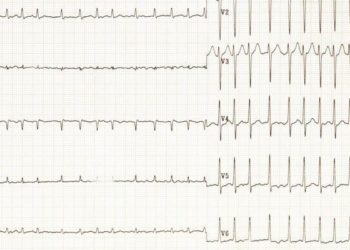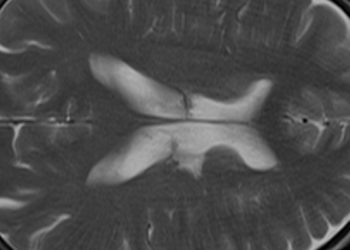Left atrial appendage occlusion is an effective alternative to oral anticoagulation in atrial fibrillation
1. The overall benefit of left atrial appendage occlusion (LAOO) for prevention of stroke in patients with atrial fibrillation (AF) depends on stroke and bleeding risks in individual patients.
2. There needs to be a sufficiently low stroke risk for left atrial appendage occlusion to be beneficial.
Evidence Rating Level: 1 (Excellent)
Study Rundown: LAAO is a potential alternative to oral anticoagulation for the prevention of stroke in patients with AF. Prior clinical trials have demonstrated that LAAO is non-inferior to oral anticoagulants (OACs) such as warfarin and direct OACs. It is associated with a significant reduction in risks for intracranial hemorrhage and major bleeding. However, concerns still exist over the potential increased risk for ischemic stroke or systemic embolism. There is a gap in knowledge as to understanding the net clinical benefit of LAAO compared with oral anticoagulants across a range of individual patient combinations of stroke risk and bleeding risk. Overall, this study found that the relative clinical benefit of LAAO and OACs in patients with AF depends on the patient’s baseline risks for stroke and bleeding and that the LAAO strategy is preferred in patients with the highest risk for bleeding. This study was limited by having clinical data on LAAO only from Boston Scientific, and therefore does not apply to other types of LAAO devices. The discussion of the comparative efficacy of DOACs versus LAAO is limited. Nevertheless, these study’s findings are significant, as they demonstrate that LAAO can potentially serve as an alternative to OACs in the prevention of stroke in AF patients, with the highest benefit in patients with the highest risk for bleeding.
Click to read the study in AIM
Relevant Reading: Left Atrial Appendage Occlusion Versus Anticoagulation in Atrial Fibrillation: Equipoise When Bleeding Risk Is High
In-Depth [descision analysis]: This decision analysis with a Markov model was conducted to simulate a virtual clinical trial of stroke prevention strategies in a cohort of 70-year-old men and women with nonvalvular AF and without prior stroke. The model was based on a patient-level meta-analysis using prior long-term trials that compared LAAO with oral anticoagulation. The model included 5 categories of health based on functional status, including alive without prior stroke, alive with prior stroke, and mild, moderate, or severe post-stroke disability, and death. The primary outcome measured was the quality-adjusted life-year (QALY), which is the cumulative survival duration in each health state, with secondary endpoints being life expectancy or life years. Outcomes in the primary analysis were assessed via Monte Carlo simulations and log-normal distributions for all hazard ratios and beta distributions for all probabilities and utilities. Based on the primary analysis, the combined risks favored LAAO for higher bleeding risk, but that benefit became less certain at higher stroke risks. At a HAS-BLED score of 5, LAAO was favored in more than 80% of the models for CHA2-DS2-VASc scores between two and five. The probability of LAAO in QALYs at lower bleeding risks (HAS-BLED score of 0 to 1) was limited to only patients with lower stroke risks, or those with CHA2DS2-VASc scores of 2. Due to this, and the fact that DOACs provide lower bleeding risks than warfarin, the net benefit of LAAO is still uncertain as compared to DOACs. Overall, this study demonstrates that the relative clinical benefit of LAAO and OACs in patients with AF depends on the patient’s baseline risks for bleeding and stroke, and that LAAO is preferred in those with the highest risk for bleeding.
Image: PD
©2022 2 Minute Medicine, Inc. All rights reserved. No works may be reproduced without expressed written consent from 2 Minute Medicine, Inc. Inquire about licensing here. No article should be construed as medical advice and is not intended as such by the authors or by 2 Minute Medicine, Inc.









